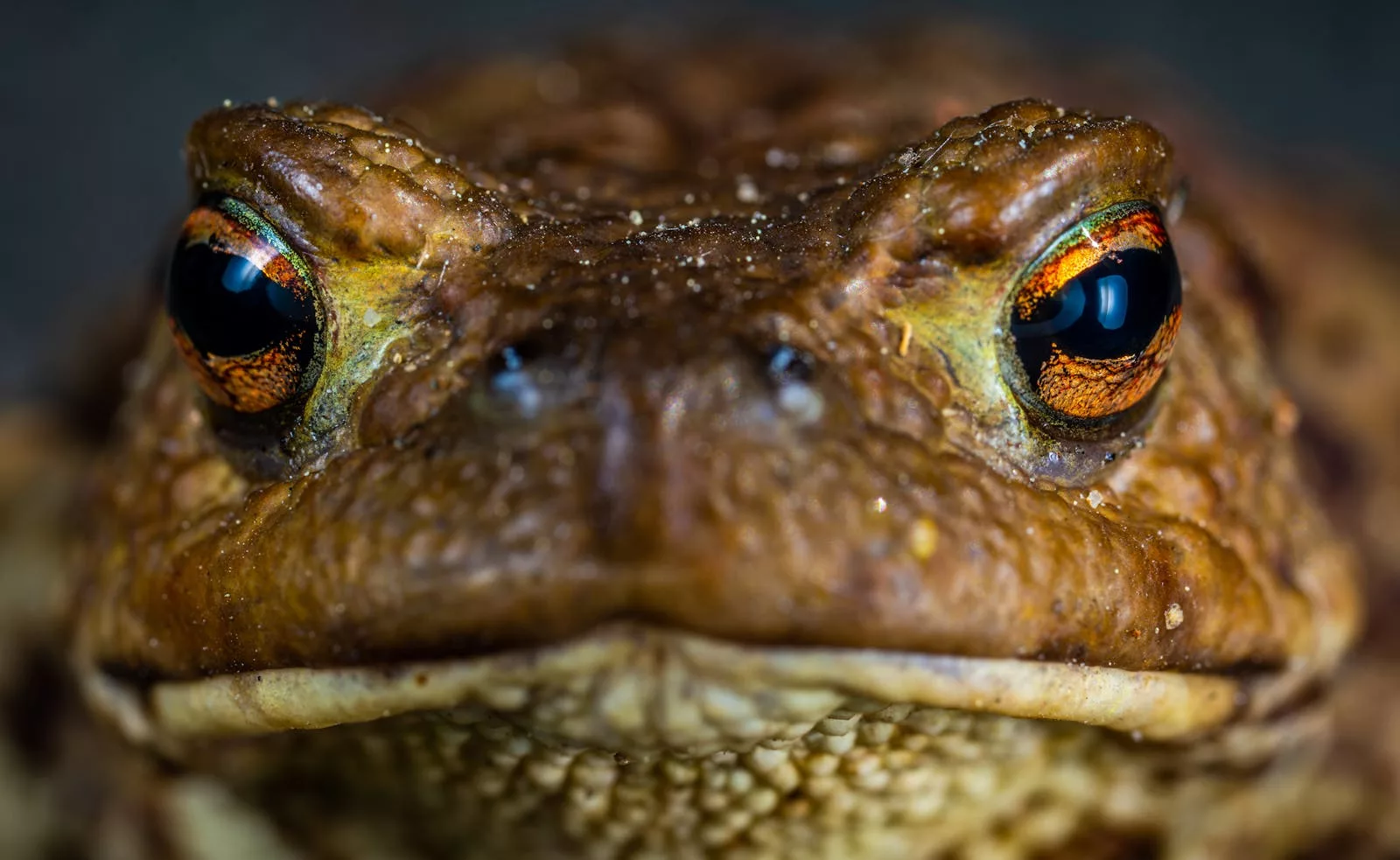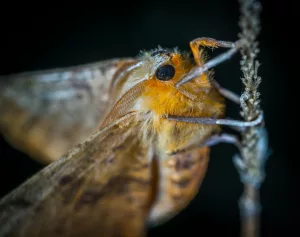Frogs are some of the most fascinating creatures in the animal kingdom, with their unique appearance and extraordinary abilities. Found on every continent except Antarctica, these amphibians are an essential part of ecosystems, contributing to biodiversity and serving as indicators of environmental health. But beyond their ecological importance, frogs possess a variety of surprising traits and behaviors that make them truly captivating. From their incredible jumping skills to their role in medicine, frogs continue to amaze scientists and nature lovers alike. Here are 16 surprising facts about frogs that will leave you with a newfound appreciation for these remarkable amphibians.
1. Frogs Can Jump up to 20 Times Their Body Length
Frogs are renowned for their incredible jumping abilities, with some species capable of leaping up to 20 times their body length in a single bound. This astonishing feat is made possible by their long, powerful hind legs and elastic tendons that store energy like a spring, releasing it explosively when they jump.
This adaptation is not just for show—it’s a crucial survival mechanism that helps frogs escape predators, hunt for prey, and navigate their often challenging environments. Whether crossing water or evading danger, frogs’ jumping prowess is a testament to their agility and strength.
2. Frogs Breathe Through Their Skin
In addition to their lungs, frogs have the unique ability to breathe through their skin, a process known as cutaneous respiration. This capability allows frogs to absorb oxygen and release carbon dioxide directly through their skin, which is particularly important when they’re underwater or in oxygen-poor environments.
To support this process, a frog’s skin must remain moist at all times, which is why they are often found in or near water. This remarkable adaptation not only helps them survive in diverse habitats but also highlights their sensitivity to environmental changes.
3. Frogs Can Lay Thousands of Eggs at Once
Frogs are prolific breeders, with females capable of laying thousands of eggs in a single clutch. These eggs are typically laid in water, where they develop into tadpoles before transforming into adult frogs. This high reproductive rate helps ensure the survival of their species, as many eggs and tadpoles fall prey to predators.
The gelatinous coating surrounding frog eggs provides protection and keeps them anchored in place, often forming large clusters. This reproductive strategy underscores the resilience of frogs and their ability to adapt to changing environments.
4. Frogs Are Masters of Camouflage
Many frog species have developed exceptional camouflage to blend into their surroundings and avoid predators. From tree frogs that mimic the texture of bark to poison dart frogs with bright colors that warn of their toxicity, frogs use a variety of strategies to stay safe.
Some frogs can even change color depending on their environment, temperature, or mood. This ability to adapt their appearance is not just a survival tactic but also a remarkable display of nature’s ingenuity.
5. Frogs Have an Incredible Sense of Hearing
Frogs are equipped with highly sensitive ears, or tympanums, that allow them to detect even the slightest vibrations in their environment. This acute sense of hearing is crucial for communication, as frogs rely on vocalizations to attract mates, establish territory, and warn of danger.
Interestingly, a frog’s eardrums are often visible on the sides of their heads and are specifically tuned to the frequency of their species’ calls. This specialization ensures that frogs can distinguish their own species’ calls from the cacophony of sounds in their habitats.
6. Frogs Have a Third Eyelid
Frogs have a unique adaptation called a nictitating membrane, or third eyelid, which provides protection and keeps their eyes moist while still allowing them to see. This transparent membrane is particularly useful when frogs are underwater or in dusty environments.
The nictitating membrane is an excellent example of how frogs are equipped with features that help them thrive in diverse and challenging habitats. It allows them to maintain their keen vision while safeguarding their delicate eyes.
7. Frogs Are Found on Every Continent Except Antarctica
Frogs are incredibly versatile, thriving in a wide range of environments from tropical rainforests to arid deserts. They are found on every continent except Antarctica, making them one of the most widely distributed groups of amphibians on the planet.
This global presence speaks to their adaptability and evolutionary success. Frogs have managed to colonize diverse habitats by developing unique traits suited to their specific environments, showcasing the resilience of this remarkable group of animals.
8. Some Frogs Are Toxic
Certain frog species, such as poison dart frogs, produce powerful toxins that can deter predators and even incapacitate larger animals. These toxins are secreted through their skin and are often associated with bright, warning colors like red, yellow, and blue.
Interestingly, poison dart frogs derive their toxicity from their diet, specifically consuming toxic insects and plants in their natural habitats. In captivity, these frogs lose their toxicity due to a lack of access to these specific dietary components.
9. Frogs Use Their Eyes to Swallow Food
One of the most surprising behaviors of frogs is their use of their eyes to help swallow food. When a frog catches prey with its sticky tongue, it retracts its eyes into its skull to apply pressure and push the food down its throat.
This unique feeding mechanism is both fascinating and efficient, allowing frogs to consume prey much larger than their mouths would suggest. It’s a striking example of how frogs have evolved to maximize their survival potential.
10. Frogs Play a Vital Role in Ecosystems
Frogs are essential to the balance of ecosystems, acting as both predators and prey. They help control insect populations by feeding on pests like mosquitoes, while also serving as a critical food source for birds, snakes, and other animals.
Their presence also indicates the health of their environment, as frogs are highly sensitive to pollution and habitat changes. Protecting frogs is not just about preserving a single species but also about maintaining the overall health of ecosystems.
11. Frogs Can Hibernate or Estivate
To survive extreme temperatures, some frogs enter a state of dormancy known as hibernation during cold winters or estivation during hot, dry summers. During these periods, frogs slow their metabolism and seek shelter in mud, water, or underground burrows.
This ability to adapt to seasonal changes highlights their resilience and resourcefulness. Frogs can remain in these dormant states for months, emerging when conditions become favorable again.
12. Some Frogs Can Regenerate Lost Limbs
Certain frog species have the incredible ability to regenerate lost limbs, repairing damaged tissue and regrowing functional body parts over time. This regeneration is most commonly observed in tadpoles but can also occur in adult frogs under certain conditions.
This remarkable trait not only aids their survival but also provides valuable insights for scientific research into regenerative medicine. Studying frogs’ regenerative abilities could one day lead to breakthroughs in human healing.
13. Frogs Can Freeze Themselves to Survive
Some frogs, like the wood frog, have the astonishing ability to survive freezing temperatures by entering a state of suspended animation. They can allow their bodies to freeze solid, with their organs protected by natural antifreeze-like compounds in their blood.
When the temperature rises, these frogs thaw and return to normal activity with no apparent damage. This incredible adaptation allows them to thrive in environments with harsh winters.
14. Frogs Communicate Through Unique Calls
Each frog species has a distinctive call, used primarily to attract mates. These vocalizations range from deep croaks to high-pitched chirps, depending on the species and their environment.
Male frogs are usually the most vocal, competing to out-sing each other in order to impress potential mates. The variety and complexity of frog calls demonstrate their importance in social and reproductive behaviors.
15. Frogs Can Detect Earthquakes
Some studies suggest that frogs may be able to sense seismic activity, displaying unusual behavior before earthquakes occur. This sensitivity is thought to be related to their ability to detect subtle changes in vibrations and environmental conditions.
While this phenomenon is still being researched, it highlights the extraordinary sensory capabilities of frogs and their connection to their environment.
16. Frogs Have Inspired Medical Advances
Frogs have played a significant role in medical research, from pregnancy tests in the mid-20th century to studies on antibiotics derived from their skin. Compounds found in frog skin secretions have shown promise in fighting bacterial and fungal infections, as well as in developing new medicines.
Their contributions to science underscore the importance of preserving frog populations, as they hold the potential for future discoveries that could benefit human health.
Conclusion
Frogs are truly remarkable creatures, with their incredible adaptations, ecological importance, and contributions to science. From their unique breathing and feeding techniques to their role as environmental indicators, frogs showcase the wonders of evolution and biodiversity. These 16 surprising facts highlight just how extraordinary frogs are, offering a deeper appreciation for these small but mighty amphibians. Protecting frogs and their habitats is essential not only for their survival but also for the health of the planet and the countless species, including humans, that depend on them.




